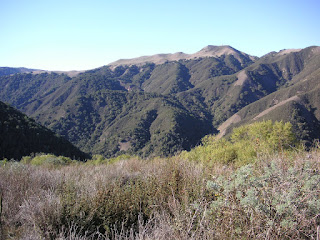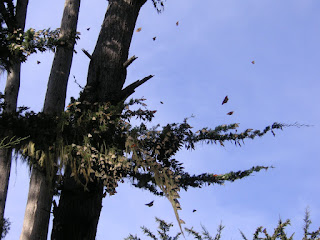gray whale
Eschrichtius robustus
for more information click here, here, and here
Eschrichtius robustus
for more information click here, here, and here
Yep, these are not the best pictures. It's really challenging to get decent photos of whales, btw, at least with my slow, poor-zoom, point-and-shoot. You can see the mottled back of the whale just to the right of the man in the second picture. This whale was incredibly close to the shore and was moving north around the Peninsula. Considering Nature ID is essentially my personal nature journal, I wanted to record the date and species of this particular whale sighting. I borrowed a marine mammal book from a friend that had cute little graphics of how one is supposed to distinguish between different cetaceans based on the shape of their spray. Ha! A couple times a year I spot various whales in the distance from home, mainly thanks to numerous whale watching boats that circle around any whales in the Bay like sharks. This time, it was thanks to a crowd of folks on the Rec Trail all pointing their cameras that we thought to stop and look. It's been a few years since I've seen a gray whale so close to the shore. The last time (unfortunately, I never recorded when), I was able to run alongside a close-to-the-shore gray from the Monterey Bay Aquarium all the way through Cannery Row, past the Plaza Hotel, and to San Carlos Beach. I've included numerous links above, because there seems to be some conflicting online information about the status of gray whales.
























